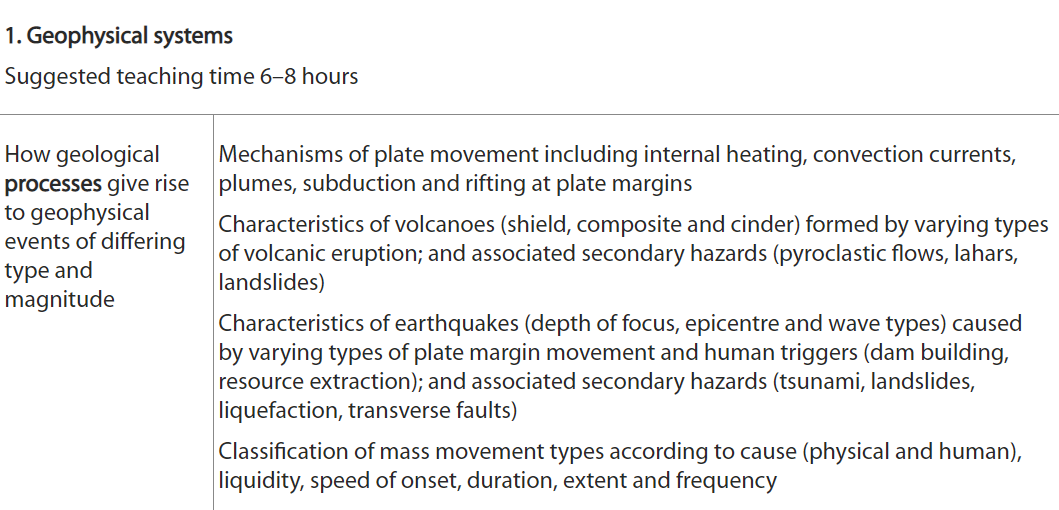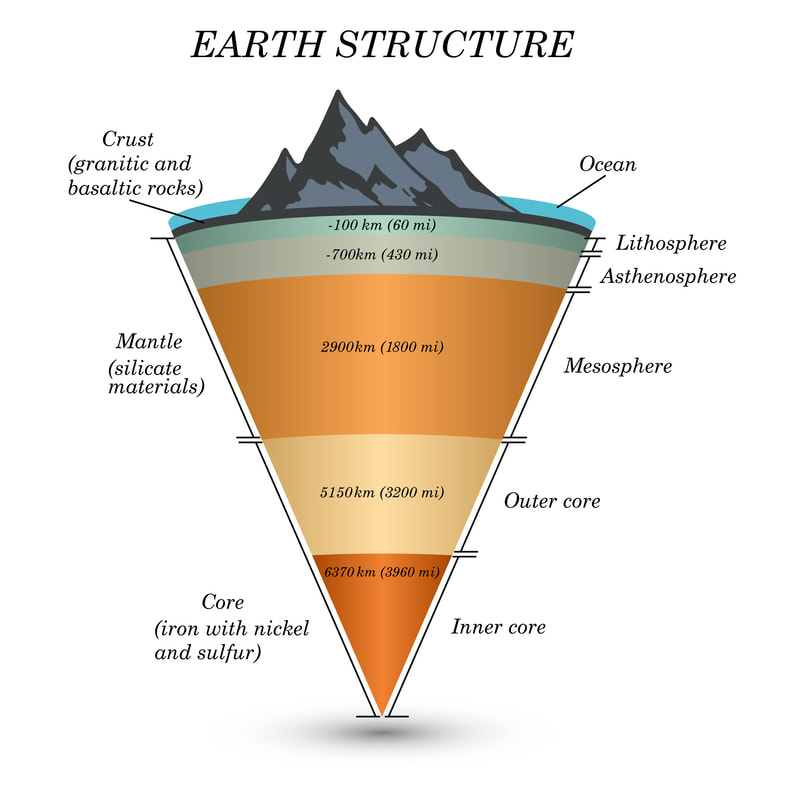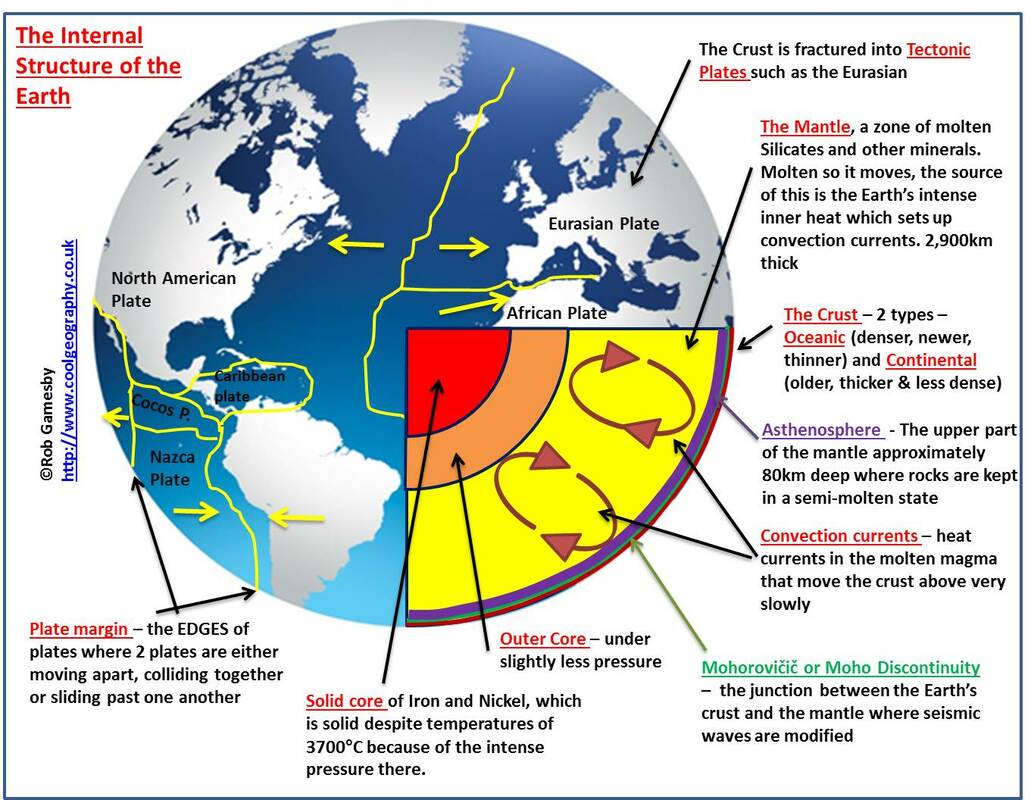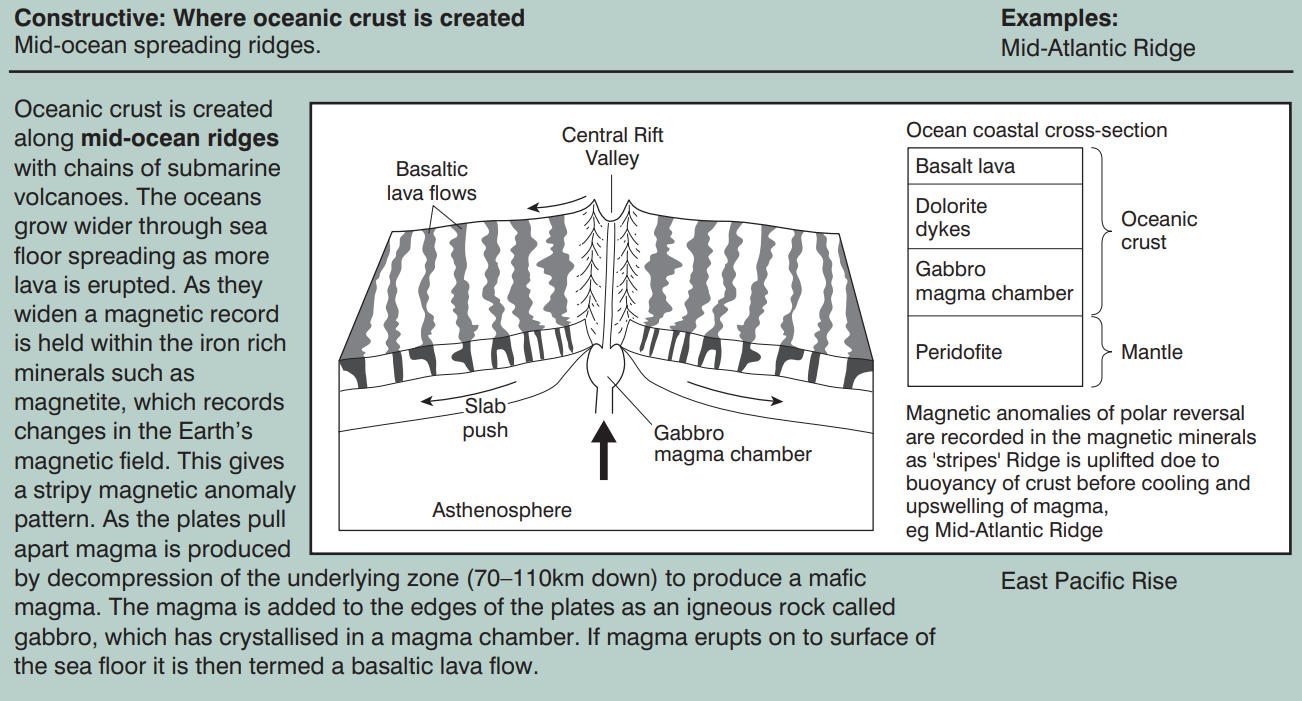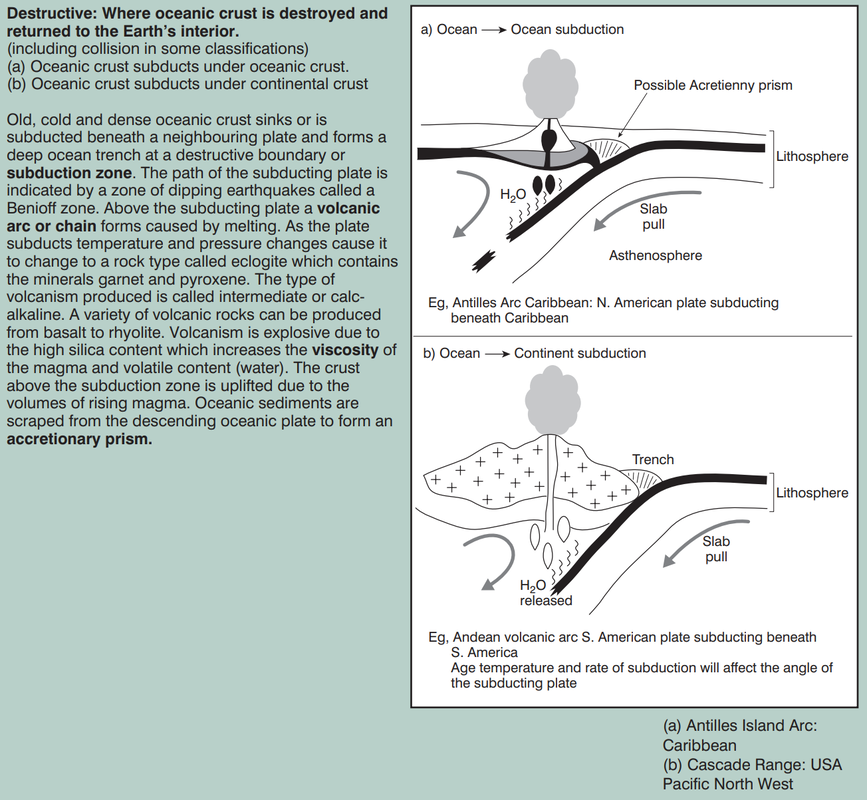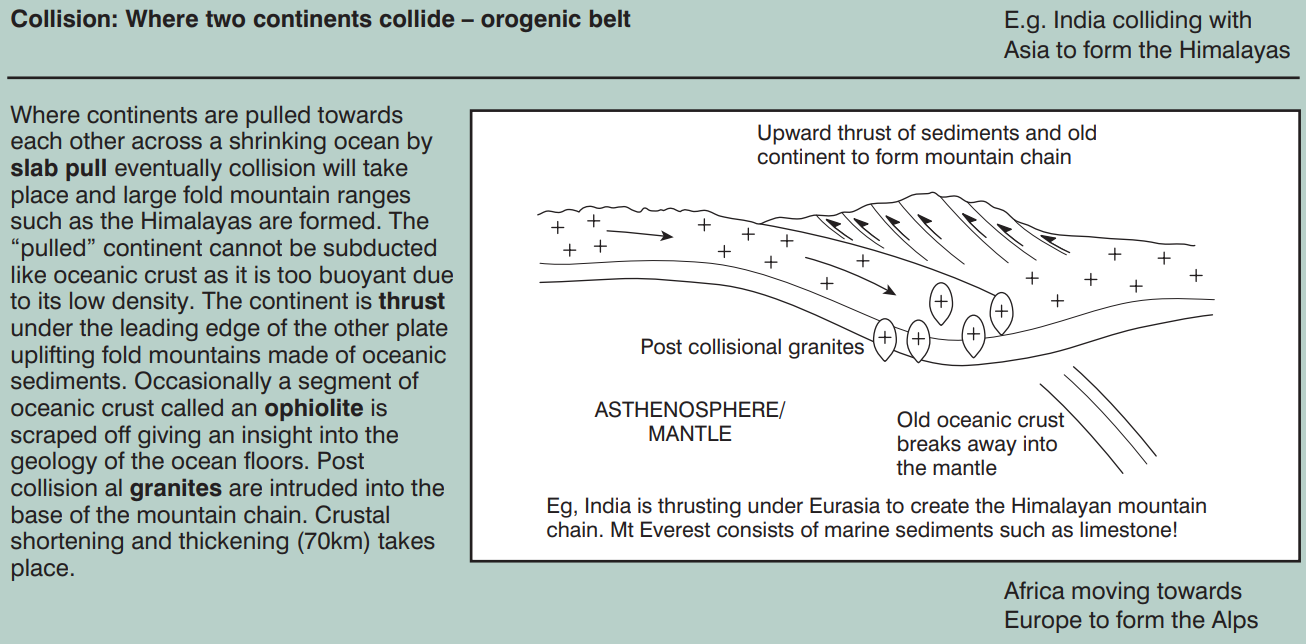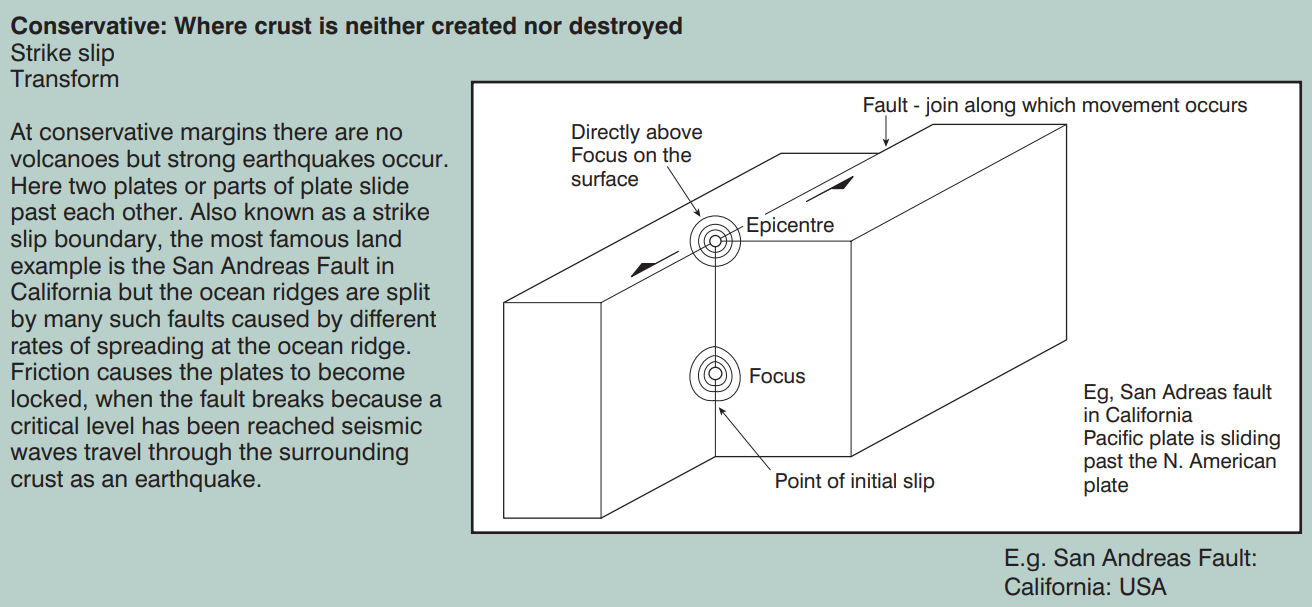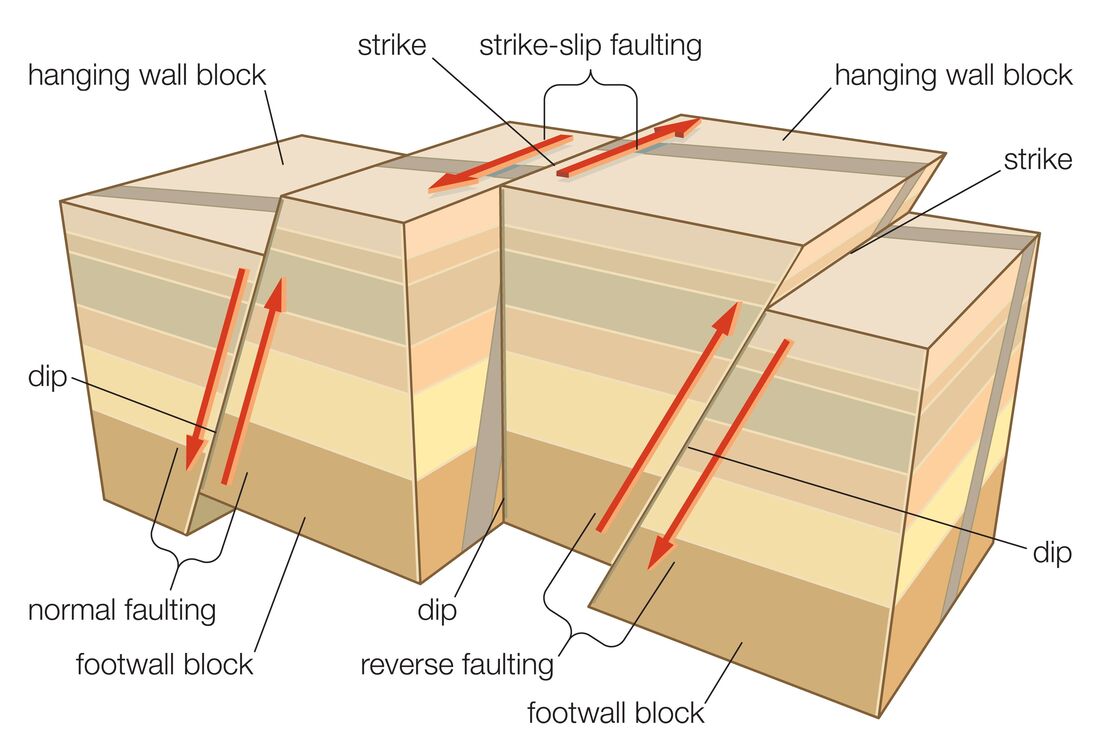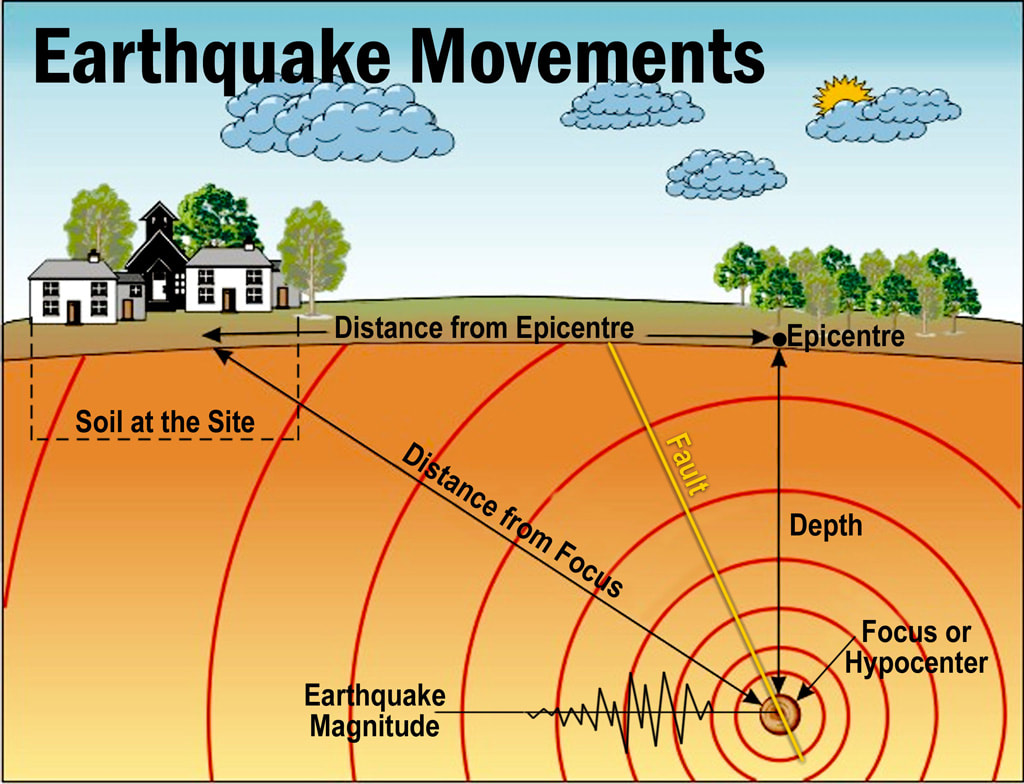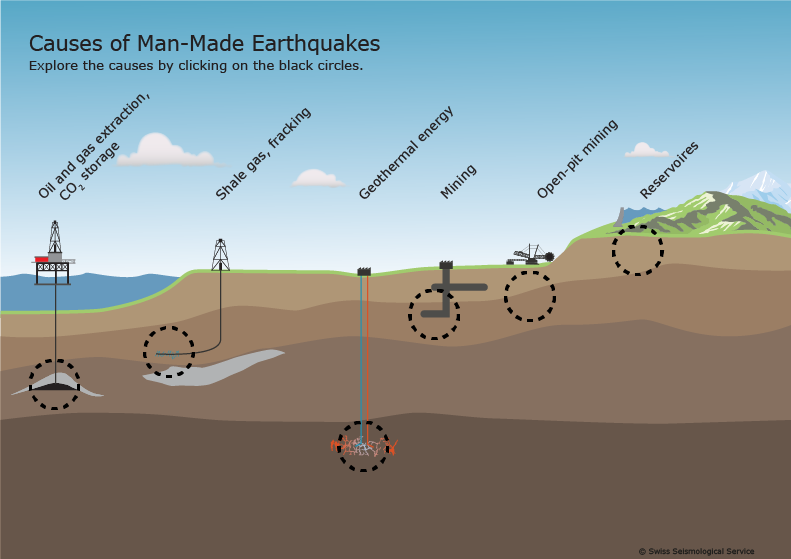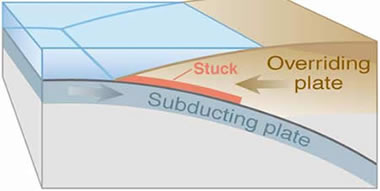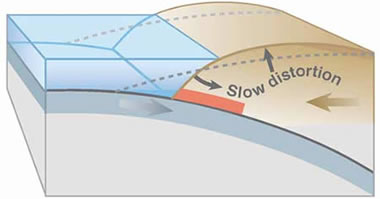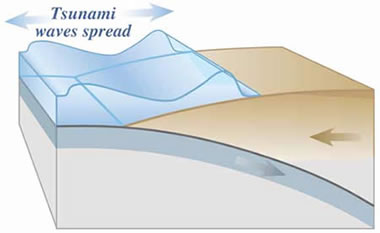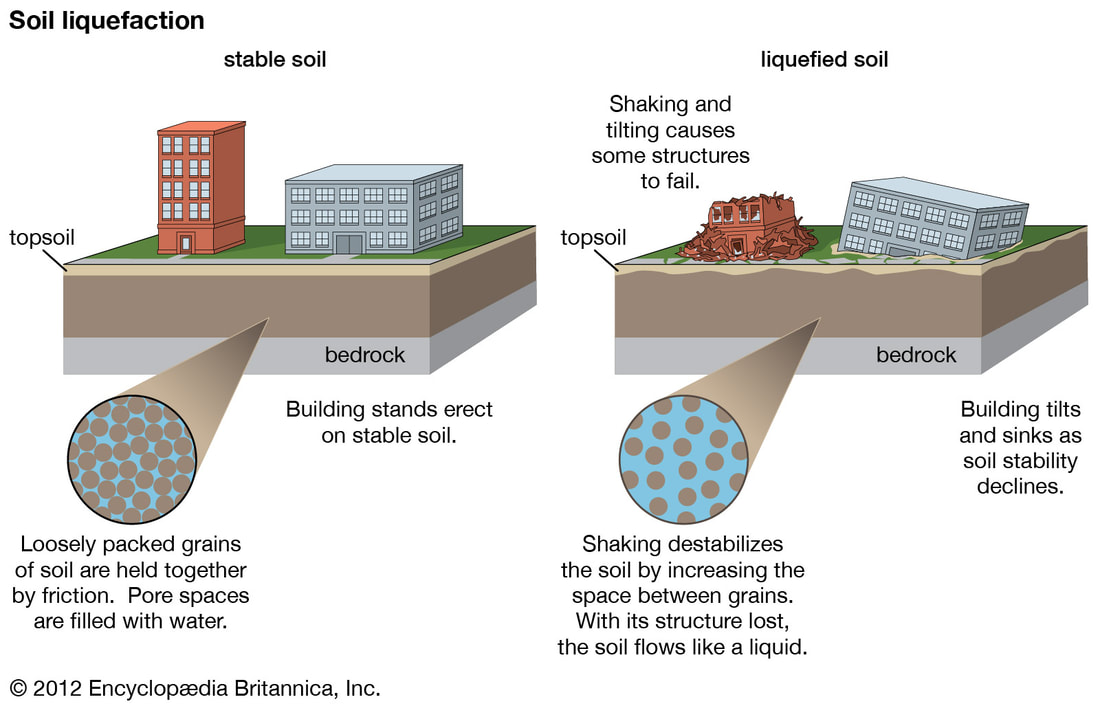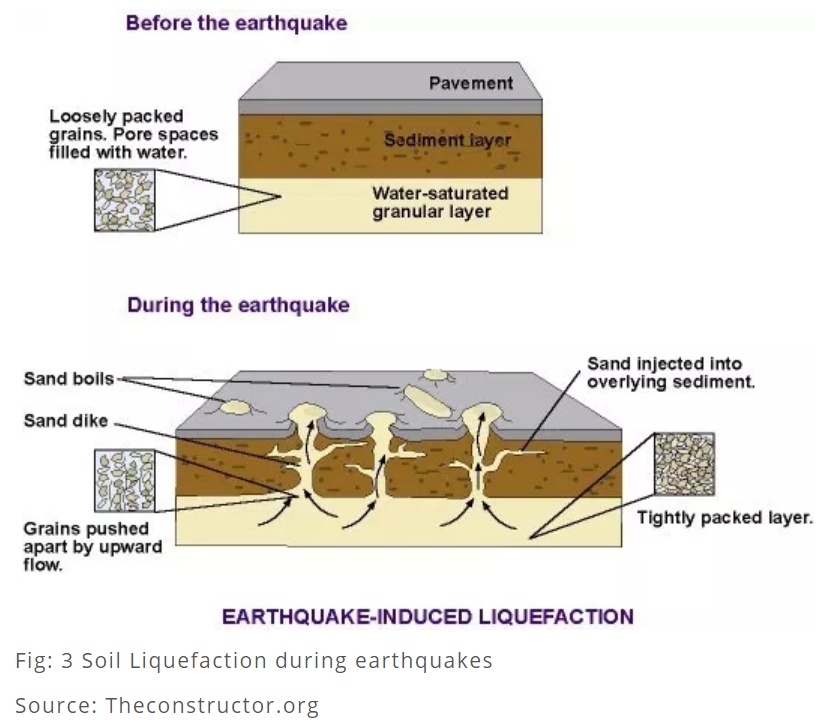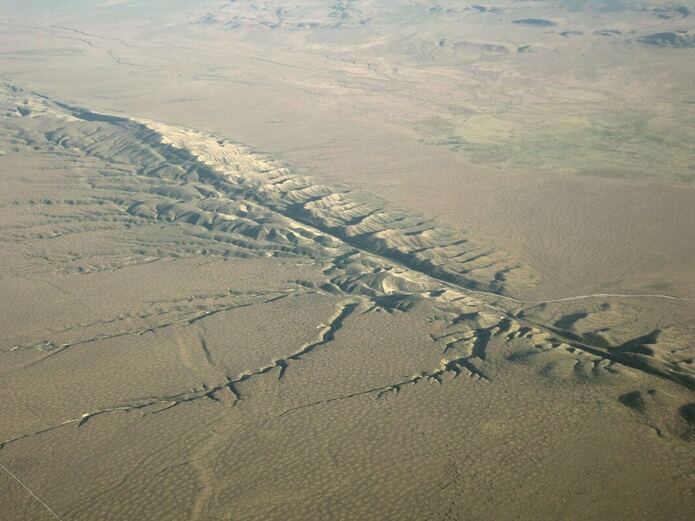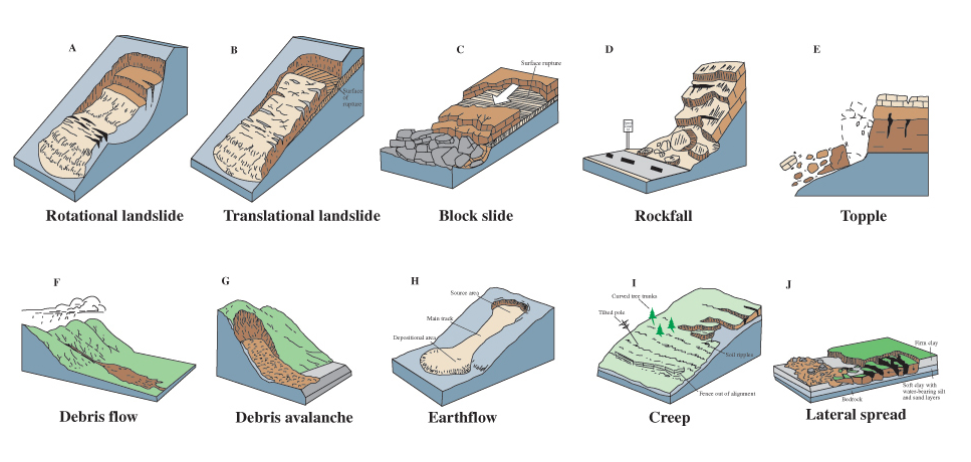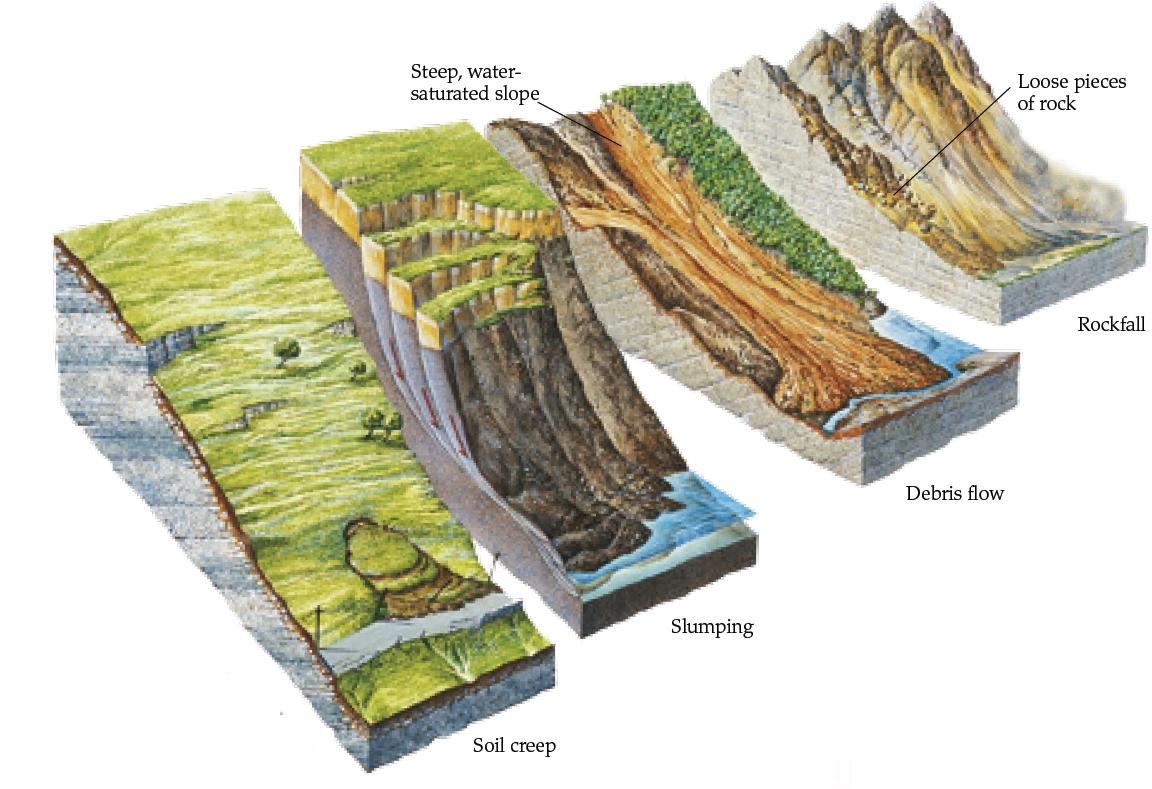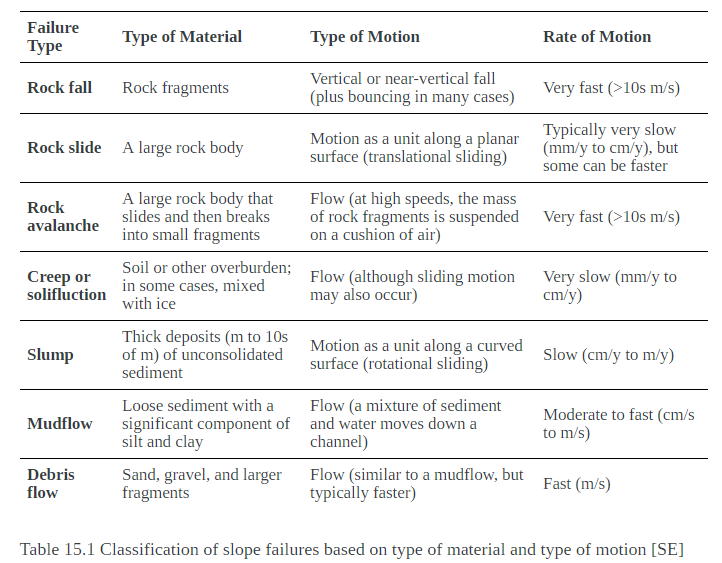Plate tectonic theory
|
|
|
Your browser does not support viewing this document. Click here to download the document.
| Plate Tectonics GeoActive | |
| File Size: | 258 kb |
| File Type: | |
Divergent Movement
Convergent movement
Transform Movement
Intra-plate Volcanism
Types of Volcanoes
Using the PPT, USGS website and YouTube explore the different types of volcanoes.
|
| |||||||||||||
Volcanic Hazards
Your browser does not support viewing this document. Click here to download the document.
| volcanic_hazards.pdf | |
| File Size: | 389 kb |
| File Type: | |
Earthquakes
Human induced earthquakes
|
Research: Make notes on the different types of human induced earthquakes - give examples
| |||||||
Secondary Hazards
TsunamiMost tsunamis are caused by earthquakes generated in a subduction zone, an area where an oceanic plate is being forced down into the mantle by plate tectonic forces. The friction between the subducting plate and the overriding plate is enormous. This friction prevents a slow and steady rate of subduction and instead the two plates become "stuck.
As the stuck plate continues to descend into the mantle, the motion causes a slow distortion of the overriding plate. The result is an accumulation of energy very similar to the energy stored in a compressed spring. Energy can accumulate in the overriding plate over a long period of time - decades or even centuries. Energy accumulates in the overriding plate until it exceeds the frictional forces between the two stuck plates. When this happens, the overriding plate snaps back into an unrestrained position. This sudden motion is the cause of the tsunami - because it gives an enormous shove to the overlying water. At the same time, inland areas of the overriding plate are suddenly lowered. The moving wave begins travelling out from where the earthquake has occurred. Some of the water travels out and across the ocean basin, and at the same time, water rushes landward to flood the recently lowered shoreline. Many people have the mistaken belief that tsunamis are single waves. They are not. Instead tsunamis are "wave trains" consisting of multiple waves. The chart on this page is a tidal gauge record from Onagawa, Japan beginning at the time of the 1960 Chile earthquake. Time is plotted along the horizontal axis and water level is plotted on the vertical axis. Note the normal rise and fall of the ocean surface, caused by tides, during the early part of this record. Then recorded are a few waves a little larger than normal followed by several much larger waves. In many tsunami events, the shoreline is pounded by repeated large waves |
Complete the worksheet
| ||||||
Liquefaction
|
Soil liquefaction, also called earthquake liquefaction, ground failure or loss of strength that causes otherwise solid soil to behave temporarily as a viscous liquid. The phenomenon occurs in water-saturated unconsolidated soils affected by seismic S waves (secondary waves), which cause ground vibrations during earthquakes. Although earthquake shock is the best known cause of liquefaction, certain construction practices, including blasting and soil compaction and vibroflotation (which uses a vibrating probe to change the grain structure of the surrounding soil), produce this phenomenon intentionally. Poorly drained fine-grained soils such as sandy, silty, and gravelly soils are the most susceptible to liquefaction.
Granular soils are made up of a mix of soil and pore spaces. When earthquake shock occurs in waterlogged soils, the water-filled pore spaces collapse, which decreases the overall volume of the soil. This process increases the water pressure between individual soil grains, and the grains can then move freely in the watery matrix. This substantially lowers the soil’s resistance to shear stress and causes the mass of soil to take on the characteristics of a liquid. In its liquefied state, soil deforms easily, and heavy objects such as structures can be damaged from the sudden loss of support from below. Buildings constructed on loose soil pitch and tilt easily when liquefaction occurs, since the soil no longer supports the structures’ foundations. In contrast, structures anchored to bedrock or stiff soils in earthquake-prone areas suffer less damage, because less vibration is transmitted through the foundation to the structure above. In addition, buildings anchored to bedrock have a reduced risk of pitching and tilting. |
|
Transverse faults
A fault that strikes obliquely or perpendicular to the general structural trend of the region.
|
|
|
Mass movement
| |||||||
